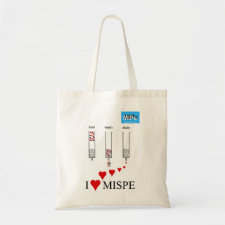
Authors: Casadio S, Lowdon JW, Betlem K, Ueta JT, Foster CW, Cleij TJ, Van Grinsven B, Sutcliffe OB, Banks CE, Peeters M
Article Title: Development of a novel flexible polymer-based biosensor platform for the thermal detection of noradrenaline in aqueous solutions.
Publication date: 2017
Journal: Chemical Engineering Journal
Volume: 315
Page numbers: 459-468.
DOI: 10.1016/j.cej.2017.01.050
Alternative URL: https://e-space.mmu.ac.uk/617944/
Abstract: Molecularly Imprinted Polymers (MIPs) are synthesized for the neurotransmitter noradrenaline with the optimal composition and binding conditions being determined via optical batch rebinding experiments. Next, the obtained MIP polymer particles are mixed within screen-printed inks to produce mass-producible bulk modified MIPs screen-printed electrodes (MIP-SPEs). In this contribution, the supporting surface which the MIP-SPEs are screen-printed upon are explored to deviate from conventional polyester, to polyvinylchloride, tracing paper and household-printing paper. The performance of the MIP-SPEs are measured using the Heat-Transfer Method (HTM), a straightforward and low-cost detection technique based on thermal resistance. At first, the noise on the signal is minimized by adjusting the settings of the temperature feedback loop. Second, the response of the MIP-SPEs to noradrenaline is measured and compared for the different substrate materials. Sensors printed onto paper are considered in further experiments as their response to noradrenaline is the highest and advantageous material properties, including sustainability and flexibility of the material. Subsequently, dose-response curves are determined by simultaneously measuring HTM and Thermal Wave Transport Analysis (TWTA). The latter is a new thermal detection method that relies on the use of thermal waves and has the advantage of a short measurement time (2 min). With these thermal methods, it is possible to specifically detect noradrenaline in aqueous solutions and quantify it at relevant concentrations. In summary, by combining synthetic receptors with thermal measurement techniques it is possible to develop a portable sensor platform that is capable of low-cost and straightforward detection of biomolecules. Through exploring novel SPE substrates, a system is designed that is flexible and holds potential for the use in commercial biomedical devices and complex sensor architectures
Template and target information: noradrenaline
Author keywords: molecularly imprinted polymers (MIPs), Paper-based biomimetic sensors, heat-transfer method (HTM), thermal wave transport analysis (TWTA), Neurotransmitters, screen-printing technology



Join the Society for Molecular Imprinting

New items RSS feed
Sign-up for e-mail updates:
Choose between receiving an occasional newsletter or more frequent e-mail alerts.
Click here to go to the sign-up page.
Is your name elemental or peptidic? Enter your name and find out by clicking either of the buttons below!
Other products you may like:
 MIPdatabase
MIPdatabase









